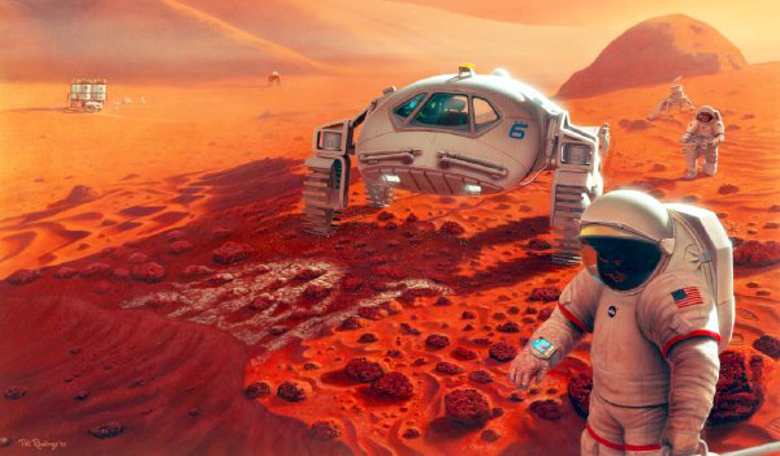If the thought of spending several months in a confined space and eating nothing but freeze-dried foods for the foreseeable future doesn’t really appeal, then a trip to Mars probably isn’t for you. However, providing enough supplies for a handful of astronauts on a round-trip to the Red Planet is a major concern for those preparing for such a mission.
How do you pack on board enough food to sustain everyone for at least a year or more, without relying on growing potatoes in the martian substrate to complement your diet? Its not like you can simply produce substances essential for the body out of thin air can you? Well, apparently you can and Finnish company Solar Foods have been working on a device that does just that - it literally produces proteins out of thin air.
Created in a mini-reactor that looks a bit like a high-tech hurricane lantern, the protein, which is called Solein, is made from just carbon dioxide (CO2), water, a small amount of trace elements and electricity.
It is a fully natural fermentation process, and the end product looks and tastes just like wheat flour. Best of all, its scaleable, it won’t run out and it is suitable for all consumer diets.
Its huge appeal lies in the fact that the production of Solein is not dependant on weather, irrigation or even land; it breaks down water molecules to create hydrogen, mixes it with a sprinkling of nutrients and carbon dioxide plucked from the air and feeds this into microbes to create the protein.
The electricity needed for electrolysis (splitting water into its constituent parts) can be sourced from whatever means necessary. If your off the grid, then solar panels, be they on a spaceship or hoisted on a pole in the middle of the desert, can do the job. Perfect not only for Mars, but for many places on this planet where malnutrition is on the rise.
Solein not only mitigates the growing level of carbon dioxide produced by traditional manufacturing practices – roughly one-fifth of greenhouse emissions come from food production alone – it also uses renewable energy. Sounds like a win-win situation.
“The method of Solar Foods for producing protein arose from a desire to produce food in a more environmentally-friendly way, without using land. The concept is not dependent on agriculture, weather or climate; instead, it makes possible efficient and low-cost food production with solar energy anywhere,” says Pasi Vainikka, CEO, Solar Foods.
Born from a NASA space programme, and further developed by the Technical Research Centre of Finland Ltd and the Lappeenranta University of Technology (LUT), last year, the company secured two million euros in investor funding from venture investors and Business Finland and its make-anywhere protein drew attention from the European Space Agency (ESA).
Now signed up to compete a feasibility study as part of the space agency’s Business Incubation Programme (BIC), Solein could become a staple food supplement for Mars-bound spacecrafts.
“The conditions in Mars colonies are very different from those on Earth, but they have sunshine, and there are huge amounts of carbon dioxide in the planet’s atmosphere,” says Kimmo Isbjörnssund, Manager, ESA Business Incubation Centre Finland. “The pioneering technology of Solar Foods enables a new way of producing food even in closed spaces.”











